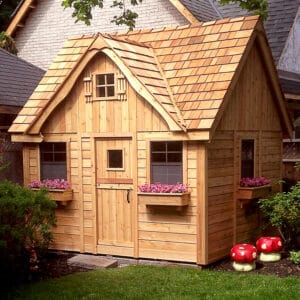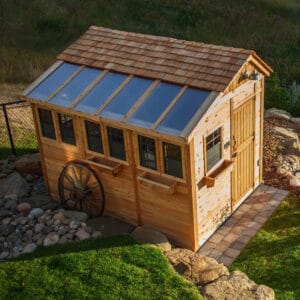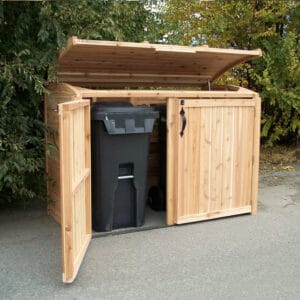No products in the cart.
October 10, 2017
Now that you are going to stow away your mower in the shed for winter, this is a good time to pick the best vegetables to grow and pack your vegetable beds so that you have a nice little harvest in the winter months. When you keep your garden going through the chilly months, you get to spend time outside in the fresh air, exercise and can give you some miraculous home-grown produce.
Up until October end, you can sow a good range as a supplement for the sprouts, parsnips, and leeks that should already be settled in. Here is a look at the top 10 best vegetables to grow in the winter:
Broad Beans: Autumn is always a great time to sow broad beans. This veggie keeps nutrients from leaching through what is otherwise fallow soil, causing its structure to deteriorate. These beans are ready a month earlier than the ones you sow in April, and they also do not get black fly. Good broad bean varieties for autumn are Super Aquadulce and Aquadulce Claudia (AGM). And this is much healthier eating compared to Skittles and potato chips.
Asparagus: Nowadays, you will find asparagus varieties that you can plant in autumn, which is fantastic as it helps them establish much quicker. Although many people think that asparagus beds take a lot of hard work, if you can get the bed free of weeds, they take a lot less work than annual vegetables. It will take you two years before they can be cut, but this is a small price to pay for a gourmet wonder. It is much healthier than loading up on fried chicken all winter and swallowing cans of soda which is also terrible for your teeth. It is easy to gain weight in the winter, if you play it smart that will not happen to you and you will even save yourself a trip to the dentist.
Peas and Pea Shoots: If you want a late spring crop, it is a fabulous idea to start sowing seeds now, especially if you live in a mild area. If you sow direct into the ground, make sure that you plant them one inch deep and relatively closely, roughly one inch apart. This will help in making up for a higher rate of loss. With peas, keep in mind that pea shoots taste amazing – all you need to do is pick the tips off and add them to salads and stir fries. Now you are cooking (pun intended)!
Garlic: If you are looking for the easiest crop to grow, garlic is it. Plant the cloves individually 2.5 inches deep if the soil is light, and a whole lot less deep if the soil is heavy, but make sure that it is a minimum of one inch below the surface. Plant them at a distance of about one foot apart. You can choose from different varieties, like Solent Wight and Province. You can also keep the vampires away which is always a benefit!
Onions, Shallots and Spring Onions: You will find many different onion varieties from sets that you can plant in now. This is actually the easiest way to grow onions, and you can harvest them earlier on in the year. For red sets, electric is good while radar is a good yellow and Shakespeare is top when it comes to white sets. Springs onions like White Lisbon Winter Hardy are an excellent choice. Shallots like Jermor are always available during this time.
Lambs Lettuce: Lambs Lettuce is a good filler – it does not demand much, grows easily and useful when you need more ingredients to add to your salads. This lettuce grows well even in low temperatures, and you can sow it up until October outside. You can pick it until December or into the New Year with milder weather or with some fleece. If you have a shortage of space in your garden, you could plant a few in between your spring cabbages.
Winter Lettuce: You can sow incredible varieties that are hardy, like Meraviglia d’Inverno San Martino and plant it out under a perforated polythene sheet or under fleece. In milder winters, you can leave it unprotected as soon as it establishes. An astute new variety is Winter Gem, which you can sow in a cold frame right through the winter till January.
Sugarsnap Peas: Although it is not known for sowing now, choosing a variety like Snow Pea Gigante Svizzero, or Seeds of Italy, will give you slow growth over winter. This will produce a crop of small-sized edible pods earlier in the next year. Sugarsnap peas are a great choice because they taste really good, giving you that fresh pea flavor than the flavor you get when you use just the pea. Plus, they are highly versatile.
Spinach: This is another popular vegetable nowadays. Pick it when it is still young and wilt the leaves instead of ruining it by overcooking it. This is a superb veggie for salads. You will find a range of useful varieties that can tolerate being sown during this time until the end of October, like Merlo Nero and Riccio d’Asti. The advantage you get from sowing in autumn is that there is no tendency to bolt.
Spring Cabbage: If you look around the garden centers in your area, you may be able to find some spring cabbage plants. Plant this veggie 12 inches apart each way, while earthing up the soil around the stems so that they are protected against the cold. If you live in a place where it gets icy, cloches, or fleece will help a lot. This is a delicious vegetable that is tremendous for planting before winter actually sets in.
As you can see, there are many best vegetables to grow in winter. This means that you can still make use of your garden during the cold months and reap a fantastic harvest. There is nothing like home-grown veggies, so consider growing the ones mentioned above before winter hits home.
Best Vegetables to Grow
October 10, 2017
-
 On SaleSale!%Off10Save $957957$10%957$On SaleSale!%Off10Save $957957$10%957$
On SaleSale!%Off10Save $957957$10%957$On SaleSale!%Off10Save $957957$10%957$ -
 On SaleSale!%Off5Save $267267$5%267$On SaleSale!%Off5Save $267267$5%267$
On SaleSale!%Off5Save $267267$5%267$On SaleSale!%Off5Save $267267$5%267$ -

-

-
 On SaleSale!%Off5Save $154154$5%154$On SaleSale!%Off5Save $154154$5%154$
On SaleSale!%Off5Save $154154$5%154$On SaleSale!%Off5Save $154154$5%154$ -
 On SaleSale!%Off12Save $704704$12%704$On SaleSale!%Off17Save $983983$17%983$On SaleSale!%Off27Save $1,5101510$27%1510$On SaleSale!%Off27Save $1,5101510$27%1510$
On SaleSale!%Off12Save $704704$12%704$On SaleSale!%Off17Save $983983$17%983$On SaleSale!%Off27Save $1,5101510$27%1510$On SaleSale!%Off27Save $1,5101510$27%1510$










